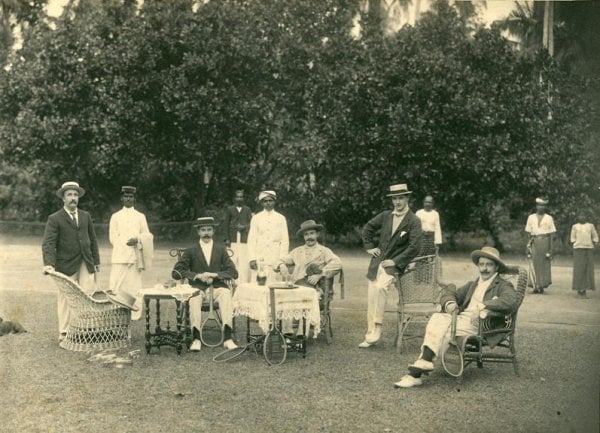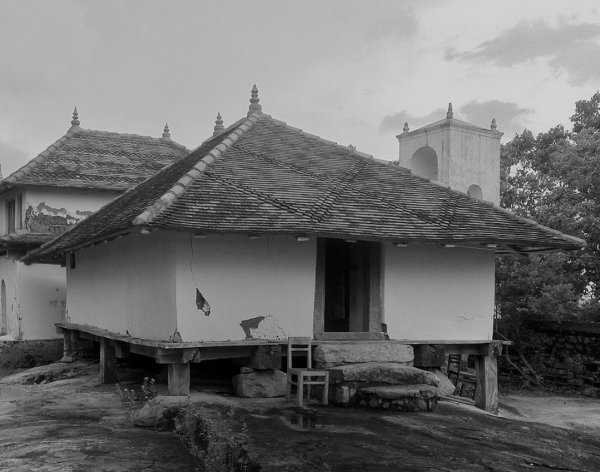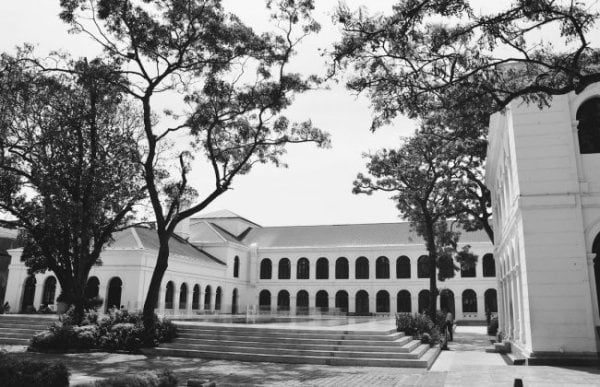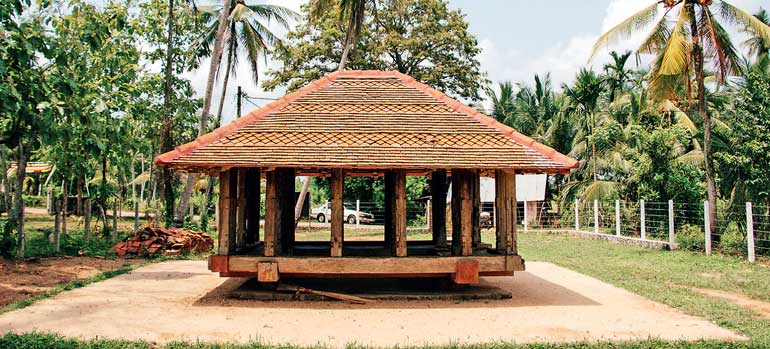
In the past, when the only means of transport for most people were their own feet, it often took several days—and sometimes even weeks—to travel from one place to another. Because of the time it took for such journeys, travellers were often in need of shelter to rest for the night. Thus the ambalama was born.
It was a simple but convenient place for travellers to prepare their meals and sleep. Most often they were built near a stream, and a large pitcher made from clay or stone—called a pinthaliya—could also be found near the ambalam for the purpose of fetching clean water.
According to the teachings of Buddhism, the construction of ambalam was considered a noble deed—therefore in the olden days, the entire village community came together to build these shelters. The size and style of the ambalama built in a village depended on the wealth of its residents—on some occasions, even the wealthy nobles used their wealth to build these wayside shelters.
Over the years, however, these ambalam were constructed for purposes other than giving shelter for weary travellers; certain folk tales and legends mention that they were also built as meeting halls to discuss village matters and to make agricultural activities easier, and on some occasions the village ambalama served all these purposes.
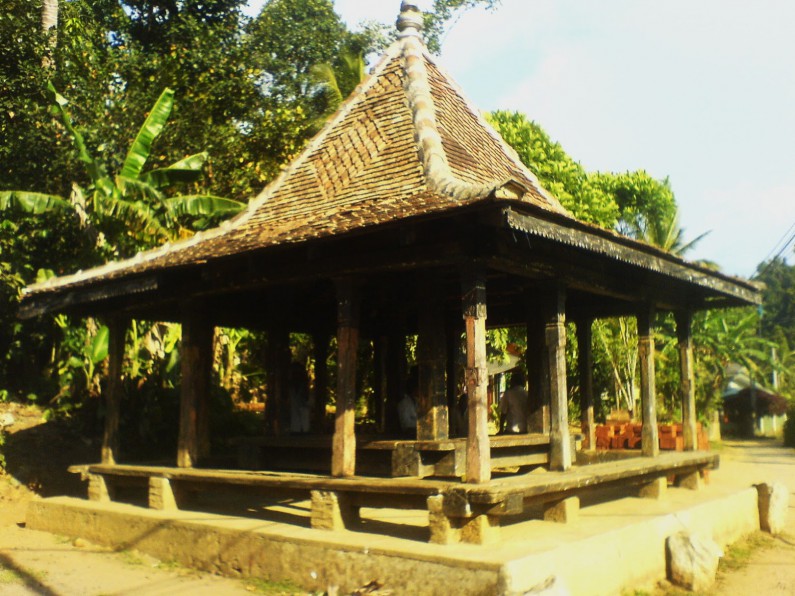
The ambalam were always built in places that were convenient for many people. Image courtesy amazinglanka.com
The architecture of the ambalama
There were no specific people appointed to design and construct the ambalam, and each one found scattered throughout the rural areas of Colombo is different. Therefore it is quite clear that they were not built according to a specific architectural design, and on many occasions the construction was not commissioned by the king either.
The most common structure of the ambalam was that of stone or brick columns with a roof laid on top. The ambalam which were thus constructed did not have very high walls. These walls were made with broad, heavy timber, which allowed people to sit down or lie down without much difficulty, while the roof was thatched with hay, coconut fronds or clay tiles.
Choosing the most suitable location to construct an ambalama was a very important decision. It had to be built in a place that was convenient for many people, and because of this many ambalam were located near wells, streams or paddy fields.
Ambalam in ancient literature

The Kadugannawa ambalama was built in the early 18th century to provide shelter for merchants who visited the Kandyan kingdom. Image courtesy wikipedia.org
The earliest recorded details on the ambalam were found in a stone inscription that dates back to the days of King Mahasen. The inscription speaks of a place called a mahavata vatussala, which means resting place alongside a main street. The ambalam are also mentioned in the Sandesha kavya—the Salalihini sandeshaya speaks about an ambalama which was built on the way from Kotte to Kelaniya, while the Gira sandeshaya speaks about the manner in which travellers who stayed in the Welithota ambalama recited poems and riddles.
In An Historical Relation of the Island of Ceylon (1681), Robert Knox spoke of the ambalam as places where Sinhalese people visited to relax and talk about politics with other people in their community.
Some historic ambalam
Kadugannawa ambalama — Situated on the Colombo–Kandy road, this ambalama was built in the early 18th century to provide shelter for the merchants who visited the Kandyan kingdom. The Kadugannawa ambalama is considered a building with historic and archaeological value because it displays the architectural style of the ancient Kandyan Kingdom.
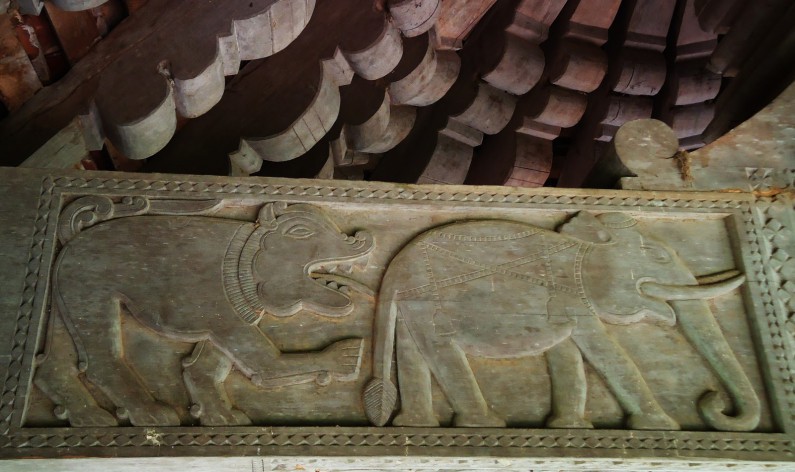
Carvings on a roof beam of the Panavitiya ambalama. Image courtesy harithacharika.blogspot.com
Panavitiya ambalama —The Panavitiya ambalama is an ambalama with wooden carvings situated near the Di Kirikawa Sri Lanka Thilaka Ramaya temple in Panavitiya. According to folklore, it is said that this ambalama was built under instruction of King Parakramabahu II.
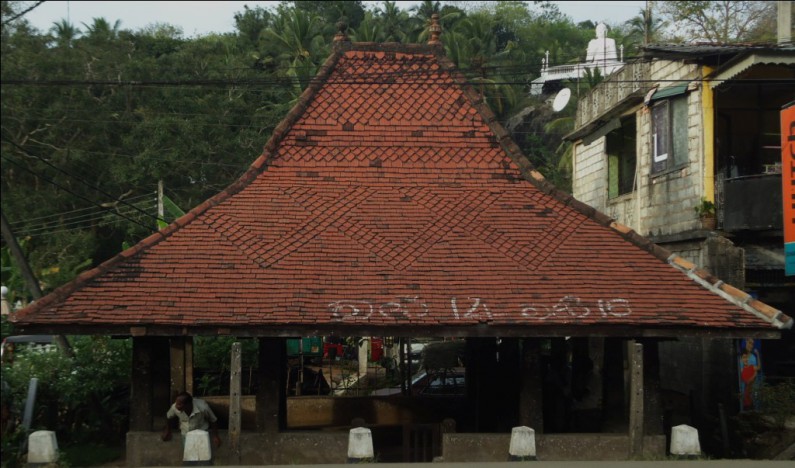
According to folklore, Mangalagama ambalama was built by King Dutugemunu. Image courtesy Amazinglanka.com
Mangalagama ambalama — Situated between the towns of Kegalle and Mawanella, it is mentioned in folklore that this ambalama was built during the reign of King Dutugemunu. According to folklore, a Brahmin by the name of Mangala came on a pilgrimage to Sri Lanka, bringing a scion of the sacred Anandha Bodiya with him. After resting in this ambalama, he decided to plant the sapling of the sacred tree next to it. Thus this area began to be known as Mangalagama.
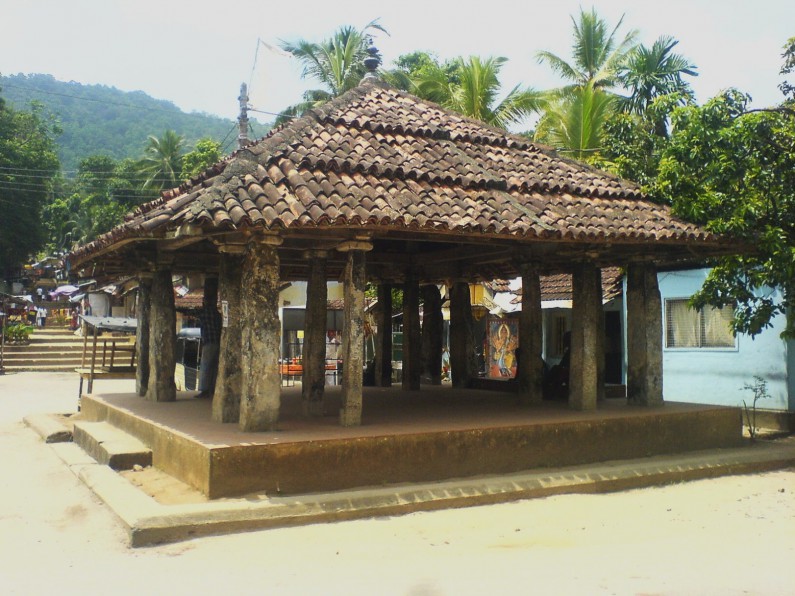
The Giruwa ambalama is located in Kegalle. Image courtesy wikipedia.org
Giruwa ambalama — It is said that the Giruwa ambalama was constructed by Sunethra Devi, the queen of King Parakramabahu II, for the use of the devotees of the Dedimunda devalaya in Aluthnuwara, Kegalle.
Jubilee ambalama — The Jubilee ambalama in Kegalle was built in the year 1887 to commemorate Queen Victoria’s 50th jubilee. It was a place of gathering for the Sinhalese nobles and office bearers of that time who wished to meet with the British agents who came to Kegalle on behalf of the Queen.
Though these structures are no longer in use, they have left their mark on Sri Lankan culture and heritage; the names of villages such as Andiambalama, Walambalama, and Ambalangoda may have possibly been derived from the word ambalama. Many of them are still preserved today as valuable aspects of Sinhalese architecture and history.
*Research by Dharani Weerasinghe
Featured image courtesy ft.lk
